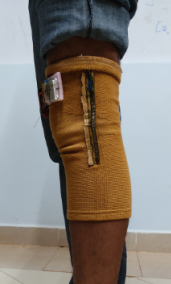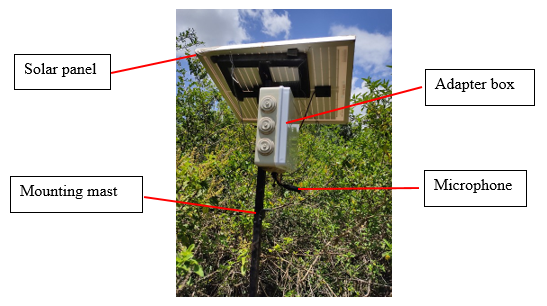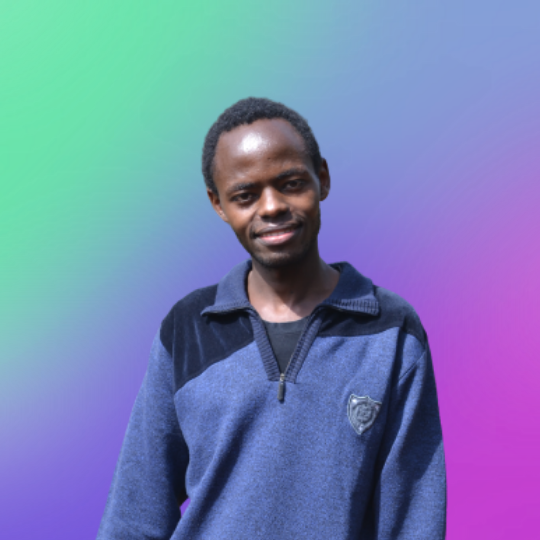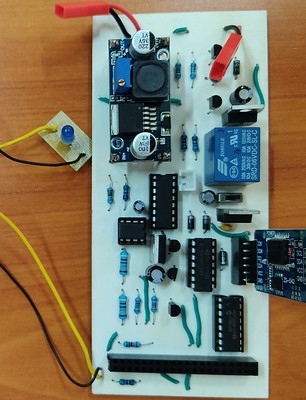
Antony M. Gitau
May, 2022
Working on a knee wearable device.
Attachment Experience at DSAIL
On the last day of January 2022, I joined a team of researchers at the Centre for Data Science and Artificial Intelligence (DSAIL) as an attaché. I was going to spend time researching and experimenting in the lab as an undergraduate researcher. DSAIL is a research lab focused on solving real-world problems. The research lab focuses on four key areas; healthcare, agriculture, environment, and climate change. Before joining this team, I had explored Data Science and Machine Learning by working on hobby projects and online courses. But then, I wanted to exploit this interest by working on real-world problems. DSAIL presented me with a unique chance to offer contributions to exactly what I had a great liking for–healthcare.
Joint replacement is the leading diagnosis among patients in the 60 to 75 years (Elasbun Kihuba). The knee joint is especially prone to many health complications due to the load it bears. Did you know that the knee joint bears a force 2 to 3 times the body weight of your body weight? So if you weigh 700N then your knee will bear about 1400N - 2100N. This predisposes the knee to multiple health conditions like osteoarthritis. Obesity, old age, excessive stress, and strain on the joint turn out to be among the greatest causes of knee pain. Knee pain is a symptom of diseases like arthritis whose main treatment method is surgery. Patients have to seek physiotherapy sessions for a reasonable recovery of joint movement after the surgery.
In practice, monitoring the flexion angle of a patient is at the heart of every orthopedic treatment. This is because restricted postoperative knee flexion is a common complication and the main cause of discomfort for recovering patients. Currently, goniometers are still commonly used in measuring flexion angle. Although goniometers are common for measuring joint angles, they are difficult to use, invasive, and highly prone to errors. Additionally, data collected is stored manually which makes it close to impossible to see patterns and draw any meaningful analytics. Figure 1 highlights the challenges of using goniometers.

Fig 1. Summary of the problem statement
I approached the problem by looking into what was already available in the market. Apart from updating myself with the literature, I also spoke to Dr. Wanjema, an orthopedics expert whose insights shaped the priority of the project. With an understanding of what was most important to orthopedic experts, I set out to develop a low-cost, lightweight, and portable device. With an Arduino microcontroller that contains a Bluetooth chip and an 11cm flex sensor, I could measure the bending angle of the knee joint (flexion angle). Connecting the microcontroller with my personal computers via Bluetooth, I received and stored the angles on my computer. First, I stored those values in a comma-separated file (CSV file). Later, when I was confident that I was getting the expected values, I moved to storing my data in a time series database (influx dB). When this worked well, I followed up by creating a program that could query the values stored in the database and display them on a gauge plot. Subsequently, I developed an architecture that could collect, store, and display the flexion angle in a real-time fashion. Figures 2 and 3 show highlights of the main parts of the solution.

Fig 2. The main components used for hardware

Fig 3.The main functions of the software.

Fig 4. The System Architecture.
Putting the hardware and software together, we achieved a working prototype by testing it in the lab. We had a healthy knee put on the knee brace and tested the angles at different values as shown in figure 5. A snippet of the results from multiple tests is shown in figure 6.
I showcased the working of the prototype to the cabinet secretary, of the Ministry of Education 2022, Prof. George Magoha, and the Vice Chancellor, of DeKUT, Prof. Ndirangu Kioni during the launch of the automated maize drier in DeKUT. Further, as a fellow of the 19th international summer school Bio-X on data science in medicine and biology, I presented the project during the student presentation forum.
The most satisfying aspect of getting involved in this project was the aspect of working on a local problem and getting feedback from a potential user. The satisfaction that came with tirelessly looking for optimal ways of solving arising problems spurred in me the desire to do a research career and pursue a postgraduate degree. Working in a research environment was a real joy for me.
The prototype still needs more work. Part of the future (ongoing) plans include collecting more data from patients using the wearable and refining the utility of the device. Further future work involves using this data to draw descriptive analytics using machine learning models to help doctors make more informed knee rehabilitation decisions.

Fig 5. Testing the prototype on a healthy knee.

Fig 6. The display on the dash app


